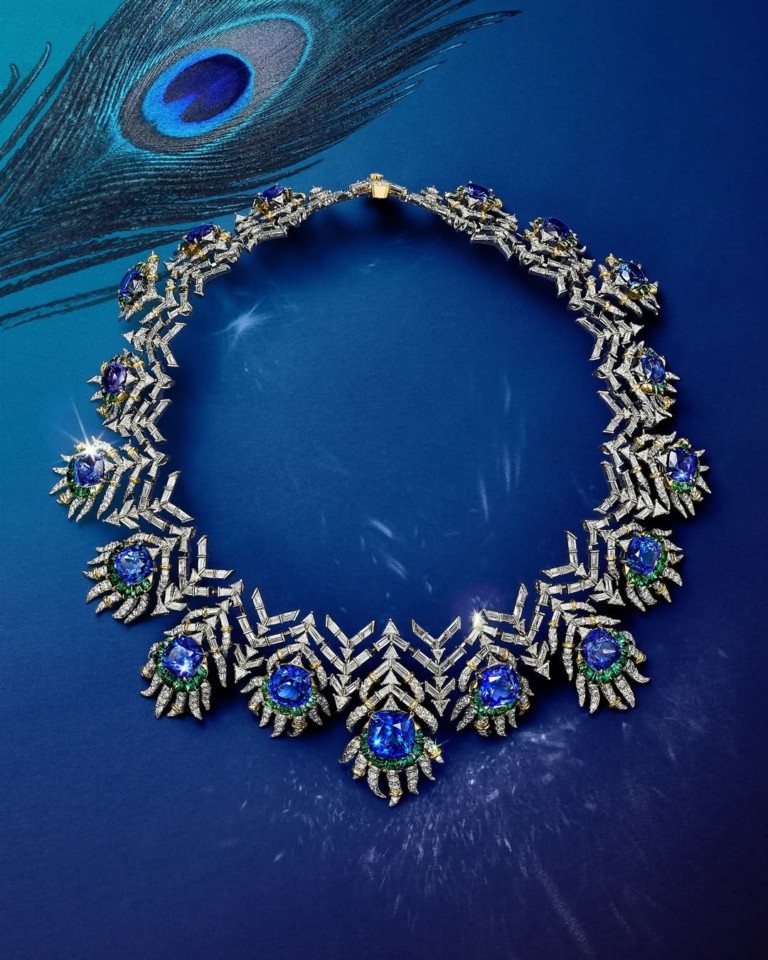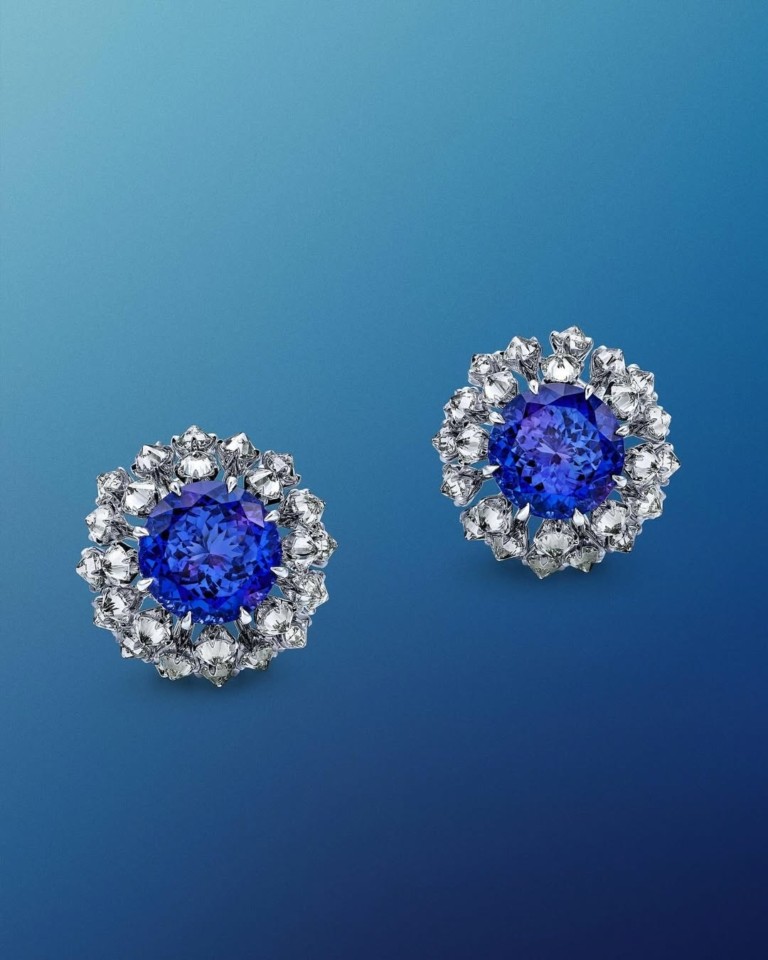27 March 2025 – 14:47
The most recent of the precious stones has already gained a passionate audience due to its special color and rarity.
Tanzanite, one of the rarest and most spectacular gemstones in the world, has managed to steal the hearts of jewelry lovers and gem collectors alike. From the shadow of Mount Kilimanjaro, the only place on the planet where it has been found, this unique gemstone impresses with its stunning blue-purple hue, which changes under different angles of light. Its rarity, combined with the ever-increasing demand, make it one of the most sought-after jewels of the era.

Η Sarah Jessica Parker with Tiffany jewelry with tanzanite and diamonds from the collection Blue Book 2013. Photo: © Steve Eichner/WWD via Getty Images/ Ideal Image
H Tiffany & Co., One of the most iconic jewelry companies in the world has taken tanzanite almost under its… protection, changed its name to better “pass” on the global market and is already launching it as the ideal gemstone to give as a gift to people with birthdays in December or to couples celebrating their silver wedding anniversary. Tanzanite, although not yet widely known, has “pushed” enough to occupy its own place in the gemstone market.
A rare and valuable mineral
Tanzanite was first discovered in 1967 on the slopes of Mount Kilimanjaro in the Arusha region of Tanzania. It is best known for its striking blue-purple color, which is a result of its chemical composition and unique structure. Tanzanite is a variety of the mineral zorite and belongs to the pyroxene category, while its intense color variety is due to the presence of vanadium and chromium ions.
It is a relatively hard mineral, with a hardness of 6.5-7 on the Mohs scale, making it suitable for jewelry and other decorative uses. Its rarity and limited mining in only one region of the world make it one of the most sought-after and expensive gemstones. Although it is usually found in blue or blue-purple shades, its exact hue can vary depending on the type of processing.

The necklace Tiffany Céleste Peacock with 17 cushion-cut tansanite. Photo: @tiffanyandco/Instagram

Earrings Tiffany High Jewelry white gold 18K with tansanithe. Photo: Photo: @tiffanyandco/Instagram
The story of the discovery
There are two versions here, the local and the international. According to the history recorded in Tanzania, the first to notice the gems with the intense blue hue was the geologist Jumane Ngoma. He, in fact, carried out the first mining with meager means in the Mirerani Hills in the Kiteto area, and it was he who gave the gems for processing and analysis, so that their composition could be revealed. For his discovery, he received a certificate of recognition three years later from the country’s then-president, Julius Nyerere, along with a symbolic sum of money.
Hans Merkle, however, also played an important role in the classification of tanzanite. The German geologist worked for the German company Tanzania Gemstones Ltd. Having undertaken the mission to explore the area for the possibility of mining precious stones, he was the first to see the Ngoma gems and used his international contacts to send samples to laboratories in Europe and India. Initially, Merkle thought it was a new variety of sapphire, but after further analysis and study, he realized that it was an entirely different mineral. In 1970, this discovery was officially recognized.
Apparently the name “tanzanite” is related to Tanzania, the country where the only known quantity of the gemstone was found. However, the name was a marketing ploy by Tiffany & Co. The original name given to the stone by the international scientific community was “blue zoisite,” but this was considered too… anti-trademark by Henry Platt, the great-grandson of the iconic Louis Comfort Tiffany and head of the company. Platt argued that the name should be changed immediately, because its English pronunciation (blue zoisite) sounded like “blue suicide”! So he called an emergency board of the company to find a new name and finally It was decided to give more prominence to the name of the country, which would also emphasize its uniqueness. For years, in fact, Tiffany & Co. had adopted a very tasteful slogan for tanzanite: “You will only find it in two places in the world, in Tanzania and in theTiffany’s»!
The price of tanzanite is determined by its color and clarity.
Rare or exceptionally large pieces of tanzanite range between 5,000-10,000 euros per carat.
Since 2010, the world’s only tanzanite mine has been controlled 50% by the state-owned Tanzania Mining Corporation (STAMICO) and 50% by Richland Resources. However, for many years, the mine was largely uncontrolled, resulting in large quantities of tanzanite being smuggled out of the mine. It is estimated that at least 2.5 million carats were “leaking” into the jewelry market through underground means each year. In 2018, the Tanzanian government decided the obvious, to build a 15-meter-high wall around the mine to prevent direct access. Production increased dramatically: From 147.7 kilograms of rock certified in 2017, mining reached 781.2 kilograms in 2019! Tanzanite reserves at current mining rates will run out in 2030-2035.
As for its price, it is determined by the rules and specifications that apply to other gemstones, especially diamonds. Color and clarity play the biggest role in pricing. For example, the average price of high-quality tanzanite with a strong blue or blue-purple hue and without imperfections, it can reach 1,500-3,000 euros per carat. There are, of course, rare or exceptionally large pieces of tanzanite that range between 5,000-10,000 euros per carat.
